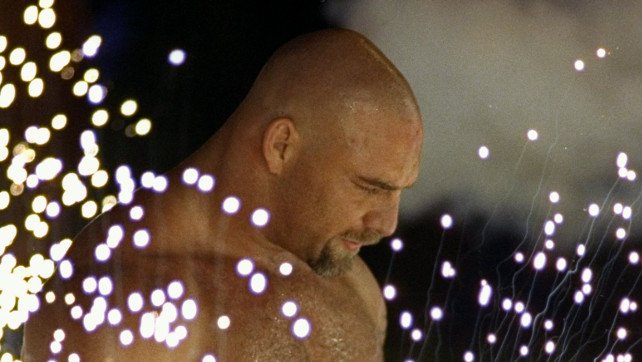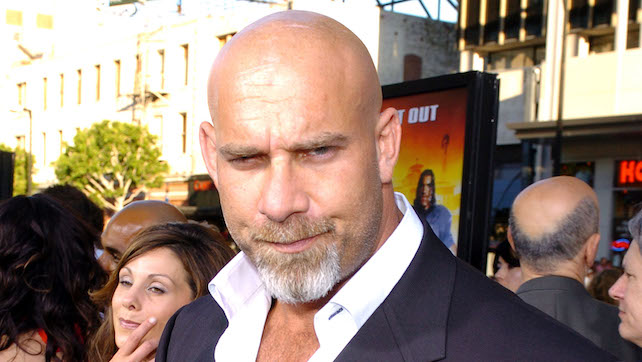
Goldberg is naturally most known for his main stint in WCW. For four years, he was the most dominant superstar on their roster, going undefeated for 178 matches and becoming the hottest name in the business. The magic of Goldberg definitely lied in his booking, as he would squash just about everyone and anyone, including the very cream of the crop.
This made him the most legitimate superstar out there, and a believable ass-kicker. What’s even more amazing is the fact that it was known that Goldberg wasn’t really a good worker, so to speak. His moveset and versatility was limited and he would even get exposed if he went on for too long.
This was something that WCW often doesn’t get credit for. They protected his biggest weakness and knew exactly what they had in their hands. It didn’t take too long for Goldberg to become a dominant World Champion, and it was only once his streak ended to Kevin Nash where things started spiraling downwards little by little.
Through the next few years, Goldberg would remain a top star, pursuing but never winning the WCW World Heavyweight Championship. He was involved in a lot of hokey angles as well, such as the one that involved him jamming his fists into a limo glass window, legitimately injuring himself in the process.
Who can forget the ridiculous “Goldberg refuses to follow the script” angle that they ran when he was feuding with Scott Steiner? Either way, he ended up being involved in a retirement angle with Lex Luger and Buff Bagwell, a team known as “Totally Buffed”. He lost and “retired” and was written off TV. However, the angle was intended for him to get shoulder surgery and return at a later point when Eric Bischoff was expected to purchase WCW.
That of course didn’t happen, and Vince McMahon ended up buying the company instead. Though they tried to get Goldberg to jump ship, he let his Time Warner contract run out. The retirement angle turned out to be weirdly legitimate, though he did return a year later – for All Japan Pro Wrestling.
Now Goldberg’s goal was always to wrestle at Japan, even if it was a brief stint. He said: “In all honesty, I like the style better because it’s stiffer. They’re not going to crying to their mommy if you hit them”
All Japan Pro Wrestling first got him for just two matches – on August 30th and 31st respectively. His opponents? Satoshi Kojima and Taiyo Kea. It’s also important to note the timeline of events in 2002. This was two years after the mass exodus that happened, which saw a lot of the AJPW talent jump with Mitsuharu Misawa to his newly-formed promotion NOAH.
Two years later, AJPW had finished a cross-promotion angle with NJPW, and one of the three NJPW musketeers Keiji Mutoh made a shocking jump to AJPW along with Satoshi Kojima. At the time, Mutoh was involved in an angle with legend Genichiro Tenryu over AJPW Presidency (which Mutoh would get in real life). Kojima, on the other hand, was being pushed as the big up-and-coming star.
With Goldberg set to make two appearances, AJPW was in a dilemma – Would it be wise to have Goldberg come all the way from the United States, beat two of their rising stars and just leave? Hardcore fans would definitely outrage at Goldberg going over two wrestlers who were clearly better workers.
However, it wouldn’t be good business to have Goldberg come over just so he could lose. There were other factors in hand, such as Goldberg’s adaptability to the Japanese style and how they would choose to protect him. The one major positive was the fact that AJPW knew how to build major stars.
His clash with Kojima took place at AJPW’s Royal Road event, where he defeated Kojima in a four-minute match. Interestingly, he didn’t use his signature spear and jackhammer but a swinging neckbreaker.
The following night, he took on Taiyo Kea in another four-minute match. He was triumphant. However, Goldberg did take a good deal of offense, including some stiff kicks to the ribs. It wasn’t the end of his run in Japan.
He would have two more matches, the first of which saw him face Rick Steiner in Yokohama in November 2002. His final match was in the Tokyo Dome on January 19th, 2003, where he teamed with Keiji Mutoh to take on a team known as KroniK. While the match itself wasn’t great, Goldberg did get a great entrance.
As we know, it wasn’t too long after when WWE came knocking on Goldberg’s door once again. He wasn’t interested the first time, seeing no reason to capitalize on his star power. However, he tried out a one-year run with the company and felt it really didn’t work out for him. It would be another 12 years before he returned for a more successful stint, seemingly redeeming himself.





